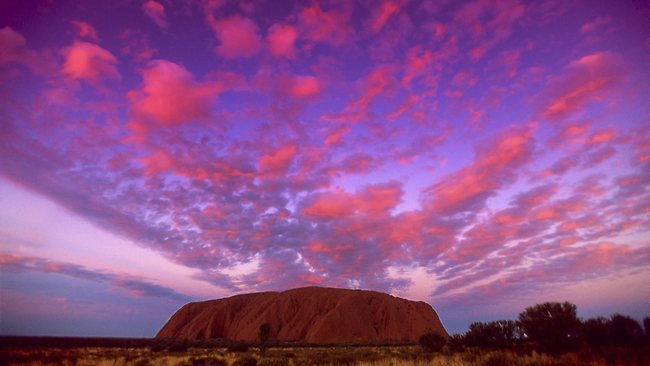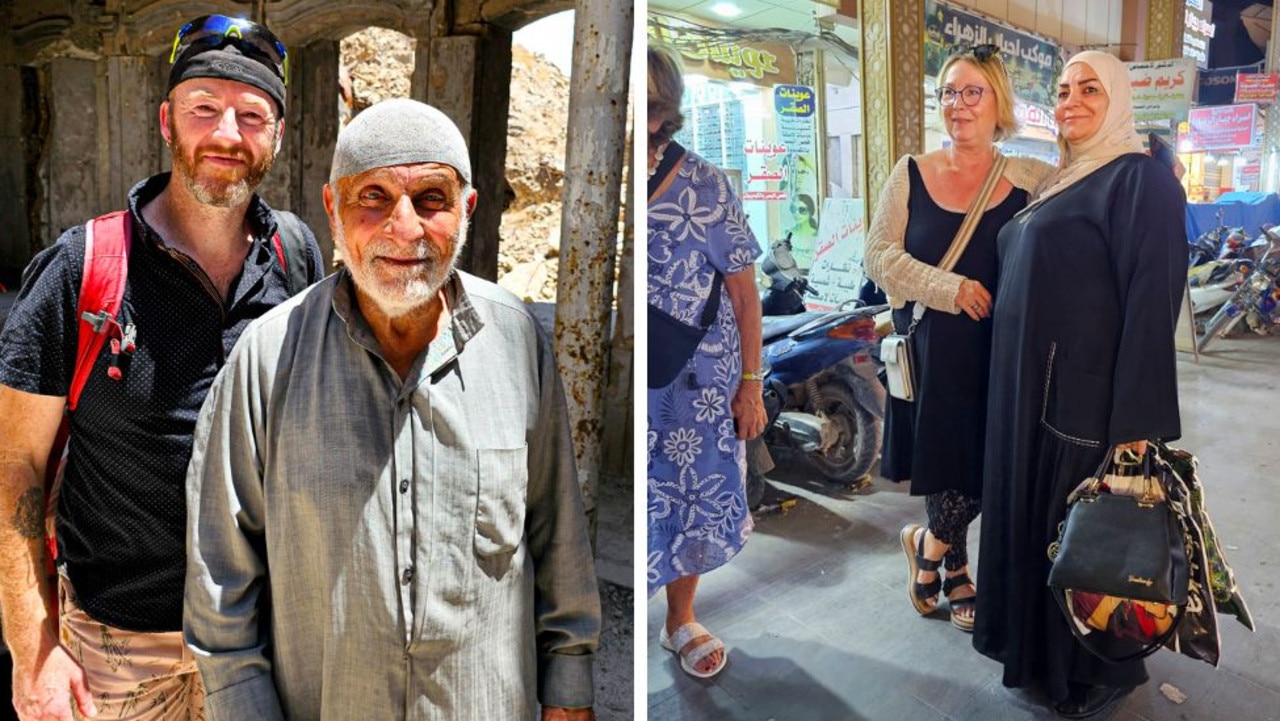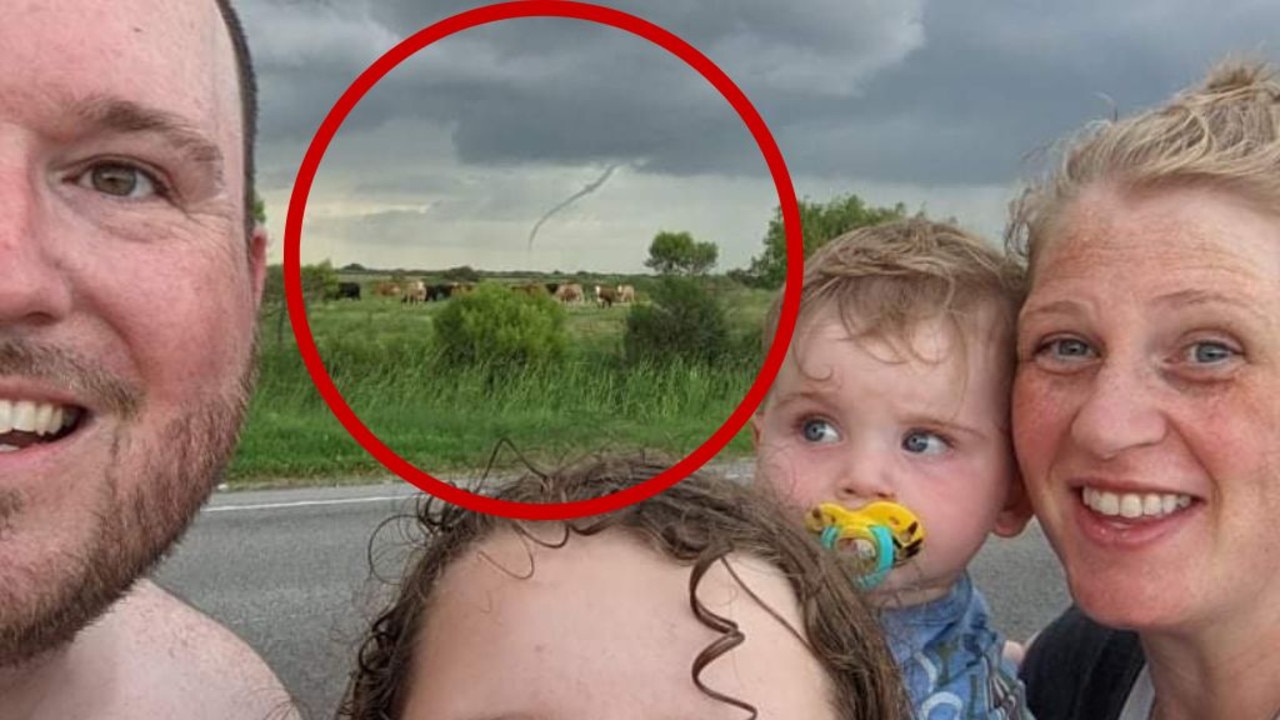Visit desert Australia, the land of colour
TAKE the scenic route through the heart of Australia, from Alice Springs to Watarrka National Park, home to everything from Kings Canyon to Uluru.

YOU need a four-wheel-drive, a pass and details of petrol stations before you set out on the scenic desert route from Alice Springs to Watarrka National Park, home to the awesome chasm of Kings Canyon.
During the daunting 450km drive, the Mereenie Loop Road takes you through the dusty heart of Aboriginal country. Strict rules permit stops in designated rest areas only, with visitors forbidden to undertake either picnics or walks.
Save for the serene sight of brumby wild horses roaming loose and free, there are not too many signs of life here.
The eeriness is heightened by passing Gosse Bluff, thought to be a giant crater created by a comet impact more than 100 million years ago.
As I discovered on my travels, the Aboriginal interpretation of such land formations is different from ours. They believe a group of celestial women were dancing as stars and one dropped a baby whose fall to earth shook the rocks upward.
Locals say the loop road has softened up over the years but hire car firms will not cover you on a two-wheel-drive on this unsealed road.
You also need to keep a check on the weather because the road may be closed or tricky to negotiate if there is considerable rainfall.
The walls of Kings Canyon are hundreds of metres high, and part of the gorge is a sacred Aboriginal site. But even when you pause to take in the breathtaking views, you sense the place may still be unfairly overshadowed by nearby Uluru.
Only hardened travellers experienced the canyon's joys from the 1960s, due to limited access, but that changed with the opening of a purpose-built resort in 1991.
The three-hour Rim Walk around the canyon in time to catch a beautiful sunrise above the 450m-high sheer red cliff faces is the highlight here.
It is a rocky and steep trek in places and is recommended only for those with a basic level of fitness.
Along the route are the Lost City, a basin of bare rock that was once a beach 400 million years ago, and the Garden of Eden, a lush green valley that leads to a pool that throws up some amazing reflections from the cliffs.
Soon it's time to get back on the road and drive the 350km stretch to Uluru, previously known as Ayers Rock.
I approached the giant red rock with some trepidation. I had been strangely unmoved by the Taj Mahal, possibly through its familiarity in photographs.
But Uluru is different as it proudly rests in the middle of nowhere. Its strong resistance to erosion is the geological reason for its existence but mystical elements are at play, say traditional Aboriginal landowners.
The Anangu people believe Uluru like the rest of the country was created by their ancestors in the form of people, plants and animals travelling across the land.
The secrets of the sacred sites are passed down through the generations by word of mouth.
The Kuniya Walk Tour was a good starting point to explore further.
An Anangu guide takes you to the base of Uluru to explain how their ancestors left their mark on the various ridges and markings on the rock face.
Given the spiritual significance of Uluru, it's no surprise to be told it's not cool to climb the rock.
It's incredible that no by-law has been required, which would actually make it illegal. Most people keep away, out of respect for this natural wonder of the world.
Camera clickers are well served by the "Sunset Experience" when you join an army of coach parties to line up for that perfect shot in front of the rock.
Tourism has mushroomed since campsites originally sprang up in the 1950s, which were the genesis of the Ayers Rock Resort in the mid-1980s.
Four-star, five-star and luxury tent accommodation are available but to my mind all these fancy trappings drain a little soul from the place. The more modest lodges and campground are an alternative it's not as if you are going to spend much time indoors.
There's plenty of soul too, just east of Alice Springs at Honeymoon Gap.
I hooked up with Wayoutback Desert Safaris to drop in and meet Aboriginal couple John and Marilyn Cavanagh.
They took us on a stroll against the backdrop of a spectacular sandstone mountain range, to explain how their Arrernte ancestors survived in the bush using nature for food and healthcare.
A couple of needles from a plant did wonders for a wart on my right thumb, as John casually explained how a bush cream of plant leaves, beeswax and olive oil, coupled with traditional singing, helped cure his broken back when a horse fell on top of him!
All this mysticism has nourished my mind and spirit, but perhaps my body needed a break after all that driving even though I don't appear to have gone very far when I consult the map of the vast Northern Territory.
A flight to Adelaide presents an attractive second stop in Australia for stays of up to two weeks. It's surprising how much you can cram into a holiday in Oz with a bit of planning.
The bustling capital of South Australia certainly packs a punch.
It's known as the 20-minute city, with short drives to the beaches of North Adelaide and the vineyards of the Adelaide Hills and a 20-minute walk to cover the city attractions and its cosmopolitan restaurants.
Adelaide has an English feel and boasts some of the most exquisite parkland in the world, down by the Torrens River.
There are no iconic sights, but two must-sees are the Central Market and the Adelaide Oval cricket ground.
Operating since 1870, the market puts British counterparts to shame with more than 80 stalls selling fresh and delicious fruit, vegetables, meat, poultry, fish and much more. The cherries I picked up were the finest I have ever tasted.
Stallholder and chef Mark Gleeson gives a more eloquent introduction to the market wares on his acclaimed tour.
Only Newlands Park in Cape Town rivals the Adelaide Oval as the world's most picturesque cricket ground.
The finest batsmen ever, Don Bradman, played there during his career and a fascinating collection of memorabilia is housed there.
Bradman honed his technique in childhood by throwing a golf ball against a water tank and hitting the rebound with a cricket stump. The opportunity to mimic "The Don" in a practical mock-up of the scene is a nice touch.
Both Northern Territory and South Australia confirm what a diverse and vast nation this is. Rather than attempting to "do Australia" in one trip, it's worth making several journeys to appreciate its wonder.
![]() Travel Tips: Northern Territory destination guide
Travel Tips: Northern Territory destination guide![]() Travel Tips: South Australia destination guide
Travel Tips: South Australia destination guide![]() Wego: Book your trip on news.com.au
Wego: Book your trip on news.com.au



